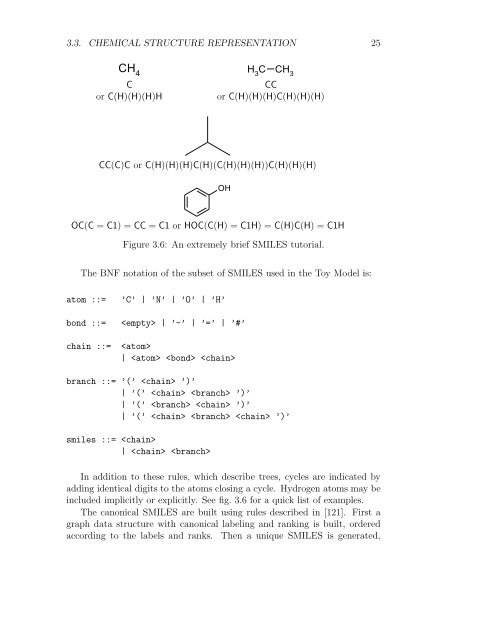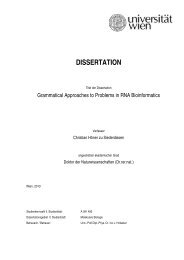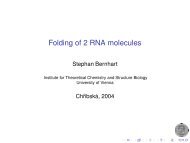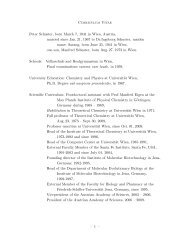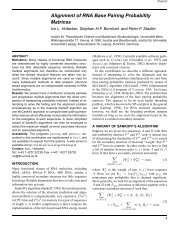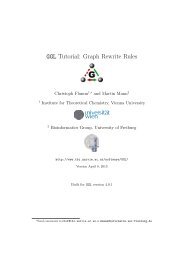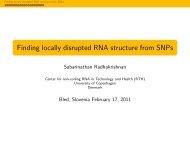A Toy Model of Chemical Reaction Networks - TBI - Universität Wien
A Toy Model of Chemical Reaction Networks - TBI - Universität Wien
A Toy Model of Chemical Reaction Networks - TBI - Universität Wien
You also want an ePaper? Increase the reach of your titles
YUMPU automatically turns print PDFs into web optimized ePapers that Google loves.
3.3. CHEMICAL STRUCTURE REPRESENTATION 25<br />
CH 4<br />
C<br />
or C(H)(H)(H)H<br />
H 3<br />
C CH 3<br />
CC<br />
or C(H)(H)(H)C(H)(H)(H)<br />
CC(C)C or C(H)(H)(H)C(H)(C(H)(H)(H))C(H)(H)(H)<br />
OH<br />
OC(C = C1) = CC = C1 or HOC(C(H) = C1H) = C(H)C(H) = C1H<br />
Figure 3.6: An extremely brief SMILES tutorial.<br />
The BNF notation <strong>of</strong> the subset <strong>of</strong> SMILES used in the <strong>Toy</strong> <strong>Model</strong> is:<br />
atom ::=<br />
’C’ | ’N’ | ’O’ | ’H’<br />
bond ::= | ’-’ | ’=’ | ’#’<br />
chain ::= <br />
| <br />
branch ::= ’(’ ’)’<br />
| ’(’ ’)’<br />
| ’(’ ’)’<br />
| ’(’ ’)’<br />
smiles ::= <br />
| <br />
In addition to these rules, which describe trees, cycles are indicated by<br />
adding identical digits to the atoms closing a cycle. Hydrogen atoms may be<br />
included implicitly or explicitly. See fig. 3.6 for a quick list <strong>of</strong> examples.<br />
The canonical SMILES are built using rules described in [121]. First a<br />
graph data structure with canonical labeling and ranking is built, ordered<br />
according to the labels and ranks. Then a unique SMILES is generated,


